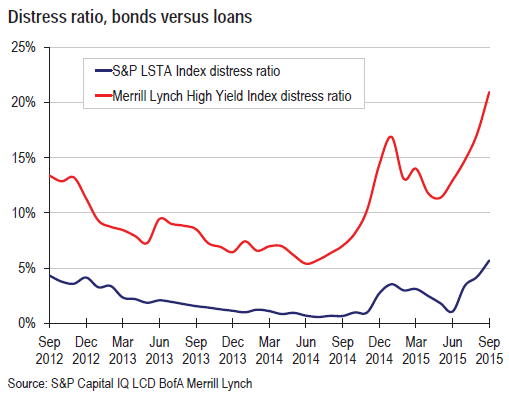Junk Bond Issuance Collapses, “Distress Ratio” Spikes
Fitch Ratings is fretting about junk-bond defaults. “After five issuer defaults already this month accounting for nearly $2 billion in new volume,” Fitch now expects that the default rate will hit 3.5% by year-end, up from 2.5% to 3% a few days ago. Through September, the trailing 12-month default rate was already 2.9%.
Worse: a 4% default rate by year end is “more likely” than a 3% default rate. And it’s “set to rise further in 2016.”
In non-recessionary periods, the default rate averages 2%. During recessionary periods it averages 11%. That’s why recessions are terrifying for junk-bond holders. Junk bonds are called “junk” for a reason.
We’re not there yet. But the energy and metals & mining sectors are getting there: in September, their default rates were 5% and 10% respectively. Fitch: “These sectors experienced three consecutive months with over $4 billion in defaults, a level not seen since 2009 when monthly volume in the entire market exceeded $4 billion for seven straight months.”
There is a period before default when investors are picking up on the troubles the company is having and demand higher yields in return for taking on the risks. Debt is considered “distressed,” when the spread between its yield and the yield of US Treasuries surpasses 10 percentage points.
The toxic miasma of “distressed debt” is engulfing more and more junk bonds and leveraged loans. Back on September 24, Standard & Poor’s announced that the “distress ratio” for junk bonds, after rising since late last year, hit 15.7%. It was the worst level since December 2011. It was terrible. But now, the distress ratio for junk bonds has soared to 21%.
This chart from LCD HY Weekly shows the distress ratio of junk bonds (red line) and of leveraged loans (blue line). Leveraged loans are generally secured by collateral and hold up better in bankruptcy than bonds, so their yields remain lower even if unsecured bondholders are headed for a total wipeout. Now the distress levels of both are soaring:
…click on the above link to read the rest of the article…
